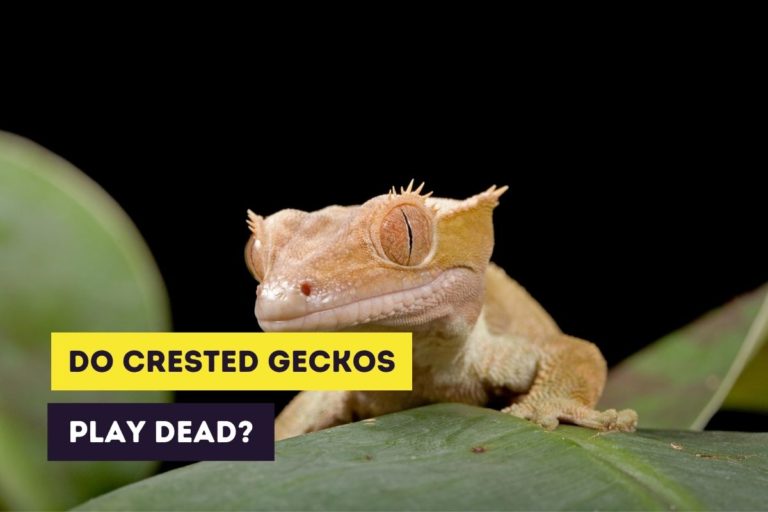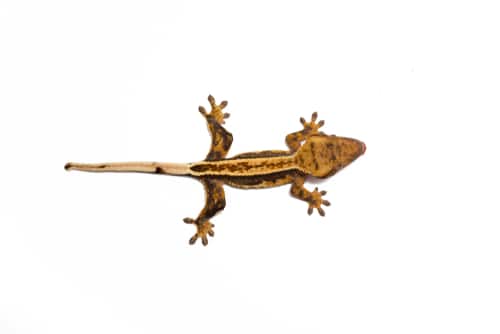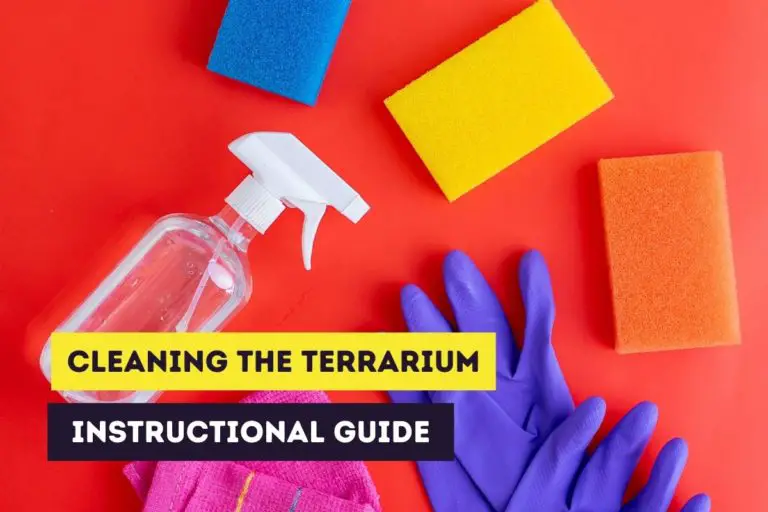Hibernation in Crested Geckos (Brumation Basics)
Estimated reading time: 10 minutes
Brumation can last for a long time and usually last for several weeks, depending on the circumstances. Some reptiles can go into a brumation for up to four months, while others can brumate for only a month. The brumation period usually depends on the length of the winter in the natural habitat.
Crested geckos go through a process of brumation when they experience lower temperatures and less light. They will be less active but won’t go into winter sleep. Brumation is not recommended for juvenile or sick crested geckos but can help when breeding crested geckos.
If you want your crested geckos to brumate, you’ll need to know how to do this properly. Unfortunately, many people don’t know how to properly create the conditions to set in brumation or let crested geckos that are not ready brumate. This can be very dangerous and even lead to death.
If you’re interested in stickers or other products of crested geckos, you can always visit our Etsy Shop, which is called Artful Animalia. We currently only send stickers in the United States. If you’re interested in certain crested gecko-related products, don’t hesitate to contact us.
In this article, you’ll learn some basics about brumation. You’ll learn why brumation can be good for crested geckos and how to create a suitable environment for brumating.
This site contains affiliate links to products we recommend and use ourselves. We may receive a commission for purchases that you make through these links. If you’re interested in learning more about our affiliate links, please visit our (affiliate) disclaimer.
Introduction to Brumation
What is brumation?
Some mammals go through hibernation when they need to conserve energy for a (colder) period. Brumation is similar but not the same process that occurs in reptiles. For example, a reptile that goes into brumation will stop eating and not defecate while in a full brumation.
Brumating reptiles don’t sleep the entire time, they’re just less active than usual and their metabolism slows down, which causes them to eat less and eventually nothing. So, contrary to hibernation, brumation isn’t a winter sleep for reptiles.
What causes brumation?
In most regions, there is a clear distinction between winter and summer. In wintertime, the hours of daylight diminishes and the temperature drops. When the summer comes, the hours of daylight increase and the temperatures rise.
Reptiles are cold-blooded or ectothermic animals and they can’t regulate their body temperature. So, their body temperature depends on the environment. Most reptiles need a lot of heat to function and digest food. Needless to say that reptiles will get into trouble when they need to survive in winter. A lack of high temperatures will cause the digestive system of reptiles not to work correctly.
Nature has luckily found a way to let these cold-blooded reptiles survive colder periods like the winter. During winter, reptiles will find shelter or burrow themselves and become less active, sleep more and eat nothing. So, brumation is a natural way for reptiles to survive.
Not all aspects of brumation are correctly understood. There are internal and external factors that cause brumation. The internal factors are, for example, the circadian rhythm of reptiles and hormonal changes. The external factors are lowering temperatures and decreased daylight.
How long does brumation last?
Brumation can last for a long time and usually last for several weeks, depending on the circumstances. Some reptiles can go into a brumation for up to four months, while others can brumate for only a month. The brumation period usually depends on the length of the winter in the natural habitat.
Why is brumation beneficial for reptiles?
A full brumation, where reptiles don’t eat any food, doesn’t happen to every reptile. Reptiles that live near the equator will experience no significant difference in temperature or daylight depending on the season. These reptiles will usually be less active but still eat.
Brumation does have benefits for reptiles. As I already mentioned, it’s a way to survive the cooler periods. But there are also two other significant benefits being attributed to brumation:
- longer lifespan: some suggest that brumation increases the lifespan of reptiles.
- breeding: a cooling down or brumation period can have a positive effect on breeding. It lets females gain strength and triggers the production of sperm in males.
Crested Gecko Brumation Basics
Seasonal changes in New Caledonia
Crested geckos are native to the south of New Caledonia. Populations of crested geckos are found in three separate locations:
- Isle of Pines
- Blue River (Grande Terre)
- south of Mount Dzumac (Grande Terre)
Below you can find the average temperatures, daylight, and humidity for these locations in the summer (hot and rainy season) and winter (cold and dry season). As you’ll see, even the winter has a comfortable temperature. You can find more information on the climate on this website.
| Summer | Isle of Pines | Grande Terre |
|---|---|---|
| Maximum temperature | 81 °F (27 °C) | 84 °F (29 °C) |
| Minimum temperature | 72 °F (22 °C) | 73 °F (23 °C) |
| Average daylight | 14 hours | 14 hours |
| Average humidity | 75 percent | 74 percent |
| Winter | Isle of Pines | Grande Terre |
|---|---|---|
| Maximum temperature | 72 °F (22 °C) | 72 °F (22 °C) |
| Minimum temperature | 62 °F (17 °C) | 62 °F (17 °C) |
| Average daylight | 10 hours | 10 hours |
| Average humidity | 70 percent | 70 percent |
Do all crested geckos brumate?
Crested geckos, just like any reptiles, can go through brumation when the temperatures drop down and when the days start to dark (so if there’s less light like in the winter times). But this doesn’t mean that all crested geckos will brumate.
Most crested geckos in captivity will not brumate because their terrariums are lightened with artificial light and the temperature is kept at an ideal temperature for them to stay healthy.
When a crested gecko is kept in these ideal conditions, it will usually not brumate. However, when the terrarium is kept near a natural light source and isn’t heated, chances are high your crestie will brumate or become less active and eat less.
Do crested geckos need to brumate?
As I already mentioned, brumation is a way for reptiles to get a break. Brumation is thought to keep your crested gecko healthier and is also believed to promote breeding. It’s also a way to stop the breeding process for a while. The female crested gecko can rest and get some strength.
If you keep only a single crested gecko or don’t plan on breeding crested geckos, you probably don’t need to let your crested geckos brumate. When not appropriately done, brumation can hurt the health of your crested gecko with brumation. So, if you’re new to crested geckos or don’t plan on breeding crested geckos, I would recommend not create a “cooling down” or brumation period.
Even when you don’t create a brumation period, it’s possible to notice that your crestie eats less and is less active during winter. This is because brumation is also caused by internal factors and isn’t entirely caused by a decrease in temperature or light.
If your crested gecko is still younger than one year or isn’t in full health, it’s also recommended not to let them brumate since there’s a chance that they will not make it through and will die.
Crested Gecko Brumation Guide
Preparing for brumation
Health checks
Crested geckos that go into brumation will eat more before they brumate. Only healthy crested gecko can brumate. Therefore, before starting a cooling down or brumation period, you should make sure that your crested gecko is:
- healthy: unhealthy and sick crested geckos should not brumate as this is dangerous and might lead to death
- well-fed: the crested gecko should have eaten plenty before going into brumation. Make sure that your crested gecko has fat reserves and normal weight for its age.
- fully-grown (at least 1-year-old): make sure that your crestie is fully grown. You can do this by measuring its length, its weight and by known its age.
If you want to make sure that your crested gecko is ready for brumation, you should go to a specialized vet to get a check-up for your crested gecko.
Dietary changes
When you’re sure that your crestie fulfills all the criteria above, you can stop giving food. Although crested geckos should be fed every other day under normal conditions, they can go for several weeks without food. When brumating, they don’t need to eat any food but will still need water to drink.
Adjusting the temperature and light
There are many different methods to prepare for brumation, but all methods require slowly changing the summertime light and temperatures to wintertime light and temperatures. These changes must happen slowly to prevent going too fast into brumation (before the intestinal tract is clean).
So, to prepare your crested gecko for brumation, you should slowly adjust the following parameters for two weeks:
- temperature: the summertime temperature for crested geckos range from 72 to 78 °F (22 and 26 °C) during the day and 69 and 74 °F (20 and 23 °C) during the night. Slowly adjust these temperatures to about 68 °F (20 °C) during the day and 64 °F (18 °C) during the night.
- light: during the summer, the average amount of light in New Caledonia is about 14 hours each day. During the winter, this amount of light drops to about 10 hours. To prepare for brumation, you can simulate this change in daylight by adjusting the amount of artificial light your crested gecko receives or by gradually blinding windows when the terrarium is in a room with natural light.
You can adjust the temperature by using air conditioners, cool packs, or relocating your crested gecko to a cooler room like a basement or garage. However, you should be careful when relocating. Make sure that the new location isn’t dangerous for your crestie and is escape-proof.
Create a hiding area
Although a crested gecko won’t necessarily need a hiding nest when brumating, you want to create a special place in the terrarium where it can hide and have a sense of safety. There are a lot of possibilities here, like coconut hides.
Brumation period
When the temperatures and amount of daylight are low enough, your crested gecko will brumate. Some signs that your crested gecko is brumating are:
- less active
- sleep more
- stays in its hide for most of the time
- doesn’t defecate
Your crestie will still drink and needs to stay hydrated.
The brumation period will last for several weeks and depends on a lot of different factors. Some lizards will have brumation periods of several months. Although there isn’t much research available about the correct period, a general brumation period of 21 to 30 days is considered normal for crested geckos.
You should weigh your crested gecko every three to four days to ensure that it doesn’t experience weight loss. A weight loss of several grams is acceptable. When you notice a considerable weight loss, you should slowly break the brumation period and make sure that your crestie gets back on track and gains enough weight.
Ending a brumation period
To end the brumation period, you should slowly raise the temperature and amount of daylight each day for about two weeks until the terrarium temperature reaches the normal summertime temperatures.
For crested geckos, the summertime temperature should be about 72 to 78 °F (22 to 26 °C) during the day and 69 and 74 °F (20 to 23 °C) during the night.
Provide your crested gecko with food following a dietary schedule (so feeding every other day). Most crested geckos will fill up with food after a brumation period, but some might need more time to start eating. When your crested gecko is back at the summertime temperature, it should begin eating.
Related Questions
Do crested geckos lose weight during brumation?
The metabolism of your crested gecko will slow down and even come to a standstill during brumation. Since crested geckos, like other reptiles, need heat for their metabolism they don’t need to consume any food and will not defecate. The weight loss of a crested gecko before and after brumation will not change drastically. If it does, you should break the brumation and seek veterinary help.
Do I still need to mist during brumation?
Although water can also be provided with a water bowl most crested geckos will lick water droplets from the leaves of the terrarium plants to drink. A lot of crested geckos don’t drink from a water bowl unless they have no other option. So, keep on misting the terrarium and provide clean and fresh water in a bowl to make sure that they stay healthy and hydrated.
Want to Learn More?
If you want to learn more about crested geckos as pets, please read the following articles.
If you’re interested in getting crested geckos as pets you should also definitely read our article about baby and juvenile crested gecko care or (adult) crested gecko care.







